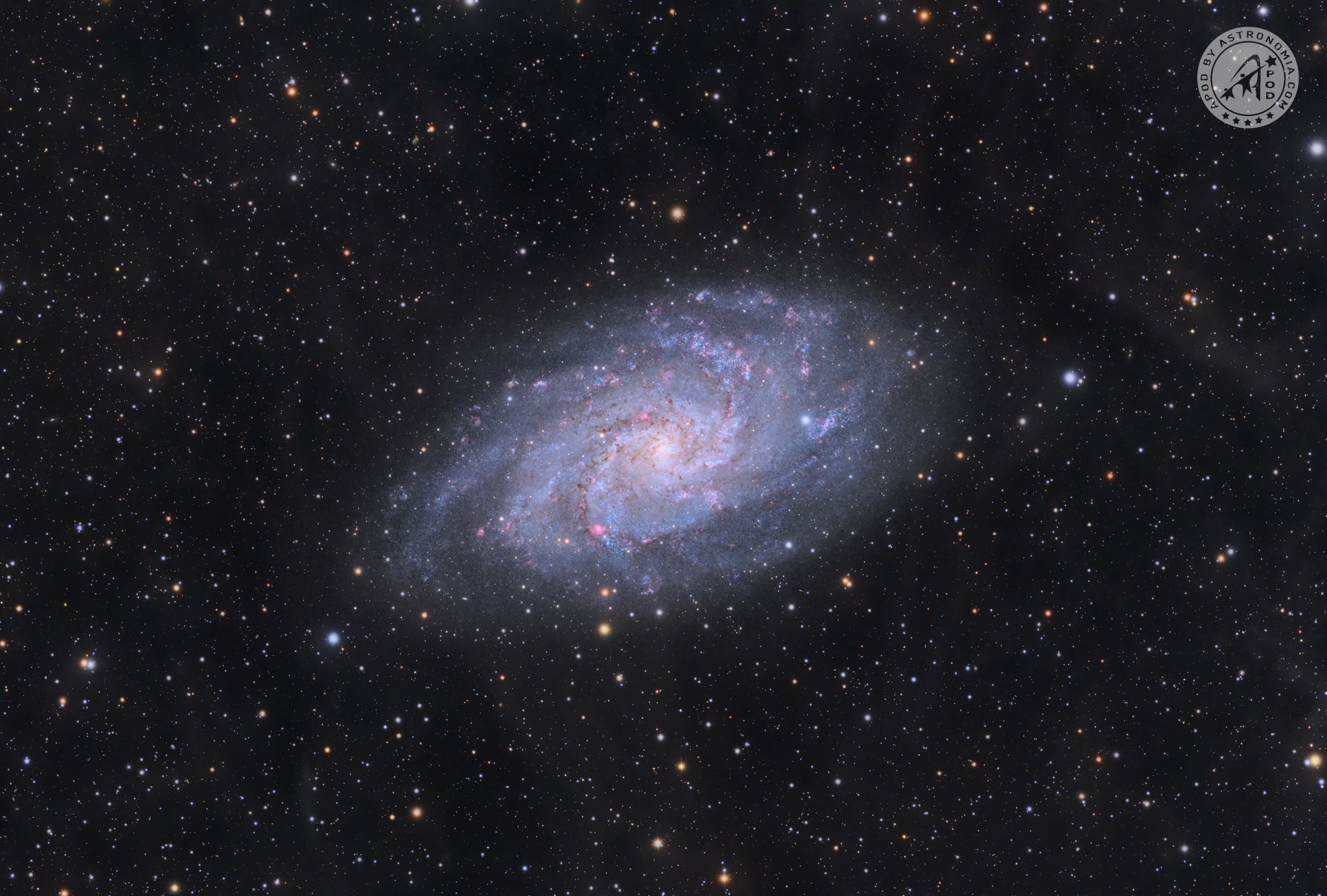Galassia Triangolo M33
24 Novembre 2021 Galaxies

La Galassia del Triangolo, conosciuta anche come M33, si trova a “soli” 3 milioni di anni luce dalla Terra, misura 60 mila anni luce di diametro ed è la terza per dimensioni e numero di stelle nel Gruppo Locale di galassie, assieme alla nostra Via Lattea, Andromeda e altre 50 galassie più piccole. Sotto cieli particolarmente bui, e con un po’ di fortuna, M33 può essere anche vista a occhio nudo, ovviamente nella costellazione del Triangolo.
A differenza della Via Lattea e di Andromeda, M33 non ha un nucleo centrale brillante e dei lunghi e definiti bracci a spirale. La sua particolarità è che contiene un’enorme quantità di gas e polvere, il che favorisce una rapida formazione stellare. Ecco perché gli scienziati hanno deciso di continuare a studiare questa galassia.
Dettagli tecnici di ripresa:
Color data was captured with the 2600MC and Esprit 120ED (2020) and Esprit 80ED (2021). Luminance data was captured with the 2600MM, Astronomik UV/IR L2, and my new Takahashi FSQ-106EDX4. Hydrogen-alpha comes from combining monochrome data captured with the 2600MM, Esprit 120ED, and Astronomik Hα 12nm filter (2021), with red channel data captured with the 2600MC, Esprit 120ED, and Radian Triad Ultra filter (2020). Post-processing was handled in PixInsight and Adobe Photoshop. Color data was combined, cleaned up, and calibrated, and Hydrogen-alpha data was applied to accent nebulous regions. Monochrome data was processed separately (cleaned up, deconvolution, some mild star deemphasis, adjustments to bring out structure, etcetera). After combining luminance and color data stars were separated, some additional adjustments were made, and the results were sent to Photoshop for final post-processing. In Photoshop I employed J-P Metsavainio’s tone-mapping routine; processed small fuzzies background IFN (and maybe a galactic stellar stream?) separately; employed additional measures to accent detail in the galaxy and fainter signal; then recombining stars.
Author: James Peirce
